art
Do You Collaborate with Painters?
05/06/13 09:22 Filed in: Photography & Art
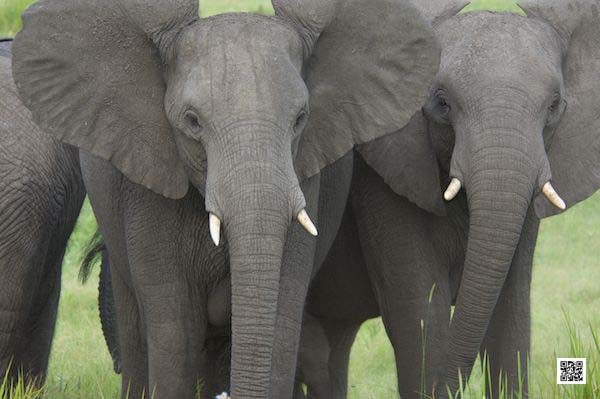
There are many talented wildlife painters out there, who don’t have the opportunity to go on photographic safaris, team building photography safaris or wildlife photography courses and they need images to paint from. Think about that when you wonder what else you could do with your photographs. Look around in your neighborhood, town or country and you will find people that would love to work with your images. And imagine how great that is to have your pictures painted.
That applies of course also to all other photographs you take at home or on holiday. It gives a new dimension beyond framed pictures and photo books. Try it!
Happy snapping and painting!
Ute Sonnenberg for www.rohoyachui.com
The Worlds Oldest Photography Museum at Your Finger Tips
12/04/13 10:09 Filed in: Photography & Art

The world’s oldest photography museum made the step into the digital age. The in 1949 opened George Eastman House in Rochester, New York has become the first photo museum to join Google Art Project.
So far 50 high-resolution images have been uploaded. They show a variety of subjects like Frida Kahlo, Martin Luther King and great photography from the very early years.
The Google Art Project is anyway a good idea to go on worldwide museum photo safari just from the comfort of your home and with no more costs than your Internet connection. It is also a great source for teaching art classes and photography courses, providing inspirational examples of visual art.
Have a look and enjoy some great museums from around the world.
Ute Sonnenberg for www.rohoyachui.com
Fairy Tale Star Talers Falling in Chicago
09/04/13 08:31 Filed in: Photography & Art

You might know the fairy tale Star Talers by the Brothers Grim. In all illustrations (at least the ones I know) one sees a girl standing, looking up to the sky, her hands holding her skirt up, collecting the star talers that fall from the sky. The air is full of sparkles and it looks quite magical.
Now there can be star talers sparkling the air even in Chicago. Photography enthusiast Satoki Nagata photographed at night, using an off camera flash that turned the falling rain and snow into stars falling from the sky.
Try it for yourself, go on night photo safari in your hometown or suggest it in your photography course class, or create a team building experience and see what stars you can illuminate. The light needs to fall in a certain angle on the rain or snow. So don’t give up when the first photo is not a success. Just keep going and it will turn out well.
Happy snapping!
Ute Sonnenberg for www.rohoyachui.com
Bert Stern: Meet Inspiration
08/04/13 12:03 Filed in: Photography & Art

In case the name Bert Stern doesn’t immediately ring a bell, he is the photographer who took the amazing images of Marilyn Monroe shortly before her death. His creative nature revolutionized advertising photographs in the early 60ies and his photographic work seems always to reflect the essence of the subject.
His photographic safaris could happen for example on 5th Avenue in New York, walking with a Martini glass filled with water, waiting for ideas for an advert. He exposed himself to the inspiration that is surrounding us and waited that it made itself known to him. It is an amazing way to work and it results in intimate and mesmerizing images.
When you would like to experience a photography course lead by him, just visit the current exhibition at the Stanley-Wise Gallery in New York and watch the just released documentary on Bert Stern Original Mad Man. Read more about Bert Stern and the movie in TIME Lightbox.
Be inspired!
Ute Sonnenberg for www.rohoyachui.com
ePhoto Book: Beauty at Ease
07/04/13 18:21 Filed in: Photography & Art

Meru National Park is a beautiful photo safari destination in northern Kenya. Its breathtaking landscapes and beautiful animals provide ideal conditions for wildlife photography courses. The light is magnificent and the outlooks over the park are stunning.
Meru got also the rare Grevy’s zebras and the gerenuks, also called “giraffe antelope”. It is a place to go to enjoy nature and photography and to be with beauty at ease.
Enjoy the ephoto book “Beauty at ease”.
Ute Sonnenberg for www.rohoyachui.com
Inspiration: The Art Paris 2013
04/04/13 09:31 Filed in: Photography & Art
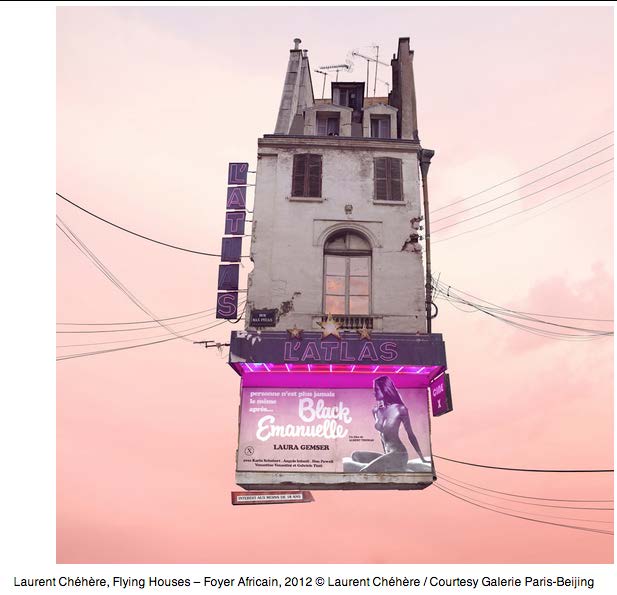
How much inspiration does one need? Endlessly much and provided by just opening the eyes. But there are these events that provide a high dose of inspiration and one of them was the Art Paris fair last Easter weekend.
Take only the image above, the flying house. It is a beautiful creation made of a photograph, giving the feeling “The Little Prince” from Saint-Exupéry will look out of the window just now. And there was much more work, just as inspiring and opening new creative perspectives to photography with galleries from all over the world exhibiting.
Ever thought of going to an exhibition and photographing the exhibition’s artwork? It can be an inspiring photographic safari wandering around and capturing the paintings and photographs of the artists, reflecting by doing that what they do to you and how they can inspire you in your own work. That way you can travel through Africa, America and Europe, art history and old masters while taking the essence with you to make the next steps for yourself.
You can make it even a team building event, visiting with your colleagues an art exhibition, everybody photographing what he/she likes and understand that way how they see things their own way. Or go with your photography course to do the same thing and learn from each other. There are endless opportunities to play with it.
Inspiration is an infinite source accessible to all; one just needs to keep the eyes open.
Happy seeing and snapping!
Ute Sonnenberg for www.rohoyachui.com
Street Photography: A Hype?
03/04/13 08:40 Filed in: Photography & Art

It seems that street photography is currently very popular and appealing. Maybe because of the easy access cell phone cameras, those allow us being on photo safari as soon as we leave home and let us discover the street photographer in us. Or is it the freshness of the moment captured, preserved for the future with often a touch of humor? Our daily life is the inspiration for our photography and one doesn’t need a photography course to do it, enjoy it and produce great photography.
Well, there are two photographers who collaborated to create an awesome street photography book called Berlin+Wien. The photographers are Kay von Aspern and Christian Reister. Their photographs were recently celebrated at the Burjuar in Berlin and will be shown in a new exhibition in Eigensinnig in Vienna that opens May 1st.
Inspired? Keep enjoying snapping wherever you go and capture wonderful moments of awe and joy.
Ute Sonnenberg for www.rohoyachui.com
LaToya Ruby Frazier: Photographic Social Documentaries
02/04/13 08:34 Filed in: Photography & Art

LaToya Ruby Frazier is from Braddock, Pa, nowadays called a “distressed municipality”, back in time home to one of America’s first steel mills. Her photographic work tells the story of her hometown through the story of her family. Her solo exhibition “A Haunted Capital” runs from March 22 – August 11 2013 at the Brooklyn Museum.
This young artist’s social documentaries show the dark side of industrialization and what happens when industrialization moves on to other places, leaving behind destroyed environments, cities and people. Her photographic safaris capture demolished hospitals and despair, yet the beauty of the photographs seems to promise a future, a future not yet arrived and unknown to the people involved.
Social documentaries can be great subjects for photography course assignments, long time projects and ways to capture history.
Be inspired and capture your history.
Ute Sonnenberg for www.rohoyachui.com
ePhoto Book: Out of Africa, an unexpected journey
31/03/13 11:18 Filed in: Photography & Art
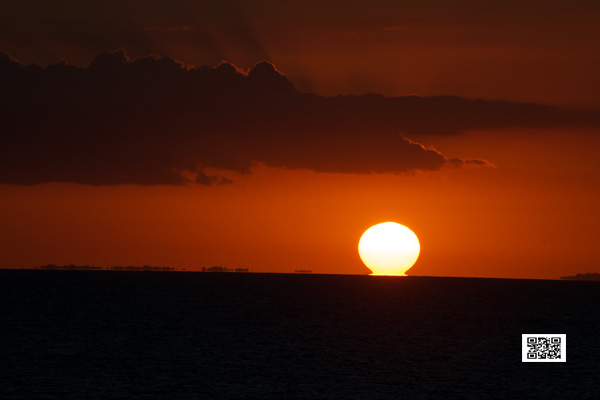
I’m usually always in Africa, doing photography and photographic safaris with photography courses. But sometimes it can happen that something unexpected happens and one gets asked to be at a very different place. That happened when I was asked to present photography courses in New Zealand. It was an unexpected journey that took me out of Africa and it was full of beautiful landscape and magic.
Have a look yourself here.
Ute Sonnenberg for www.rohoyachui.com
Christo: Swimming in Light
27/03/13 08:57 Filed in: Photography & Art
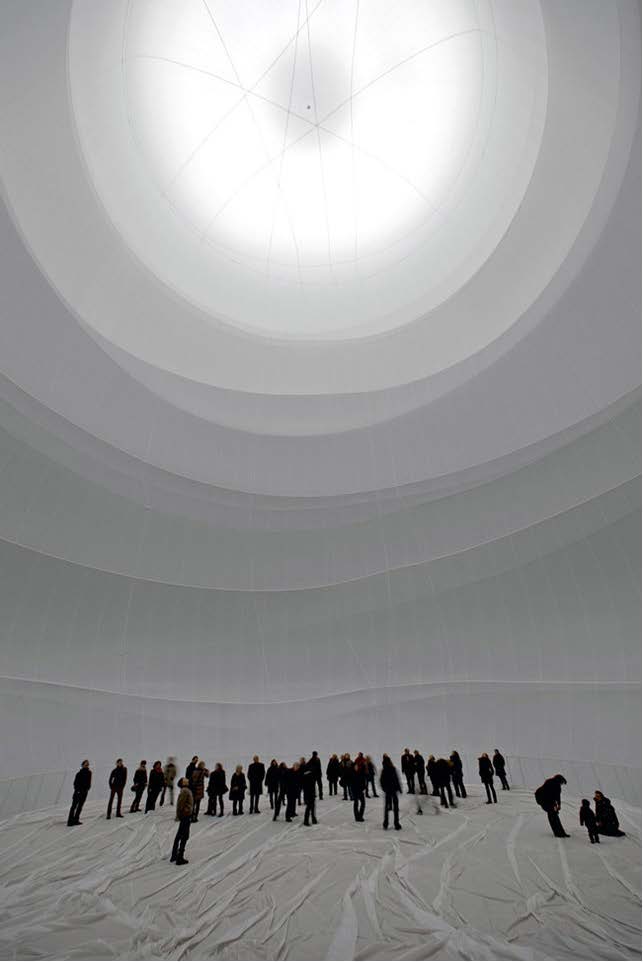
Christo’s art might be controversial, but what he always accomplishes is awe, surprise and a new experience. Many of us know his work only from photographs, but if you are able to visit Germany this year make a stop in Oberhausen, where Christo created as they say there, the largest indoor sculpture ever.
The installation is called Big Air Package with a huge balloon filled with air in a former gas storage silo in Oberhausen. Light shines from the top onto it and Christo self said, he had the feeling to swim in light when he saw it.
So, where is light there is photography. Take on the challenge and capture “light swimming”, get your photography course going there, maybe plan a photographic safari through Europe visiting special art exhibitions or start a photography project around this piece of art and be inspired as photographer for your own work.
Happy light swimming!
Ute Sonnenberg for www.rohoyachui.com
Egene Atget: Nostalgia and Surrealism
25/03/13 15:22 Filed in: Photography & Art

Eugene Atget, French photographer, was born in 1857 and his photography breathes the air of nostalgia, with his images telling the story of Paris at the turn of centuries. He seemed to be a shy man; referring to the photos he took that they would only be simple documents. Nonetheless others noticed their strength and Man Ray, one of the most prominent surrealists of his time purchased several of them and used “During Eclipse” for the cover of La Revolution surrealiste (via Photoblographer). Atget did not want his name on the cover picture. Maybe there was also a bit hesitation with surrealism, but that would be speculation on his thoughts. Yet it’s quite interesting that these nostalgic images are linked to surrealism, when one has in mind e.g. paintings of Dali.
The photography story of Egene Atget is a story like many others of photographers and artists who don’t think too much of their own work and hesitate to be proud of it. One got to start somewhere, with a photography course, a study or just snapping away, nothing is impossible. Just keep practicing and photographing as much as possible and the next cover photo might be one of yours!
Happy snapping!
Ute Sonnenberg for www.rohoyachui.com
The Paradox of Photographing People's Lives
22/03/13 10:05 Filed in: Photography & Art | Insights & Opinion

Sebastiãno Salgado is an amazing photographer, traveling the world photographing people’s lives in difficult circumstances. His images go deep, show the people’s struggle and the respect he feels for them. Sebastiãno Salgada is only one of a number of photographers capturing the lives of the impoverished and unfortunate with respect and great artistic skills. And we as the viewer and buyer love the images and admire the photographers.
But what makes the photographers choose these subjects and what makes us the viewer to love these images?
We want to feel that we live.
In the western world most of the people have a home, work and some sort of security in their lives. For most of the people there is no daily confrontation with danger and death, the own death, which is how we want to live, what we work for, to be safe. Yet it seems that we need the confrontation with death in order to be conscious that we live. One can do bungee jumping or skydiving, do video gaming or embark on adventures themselves and one can also look at art and photographs like from Salgado. I don’t know if people from a dangerous gang controlled city area or an area with no water and food look at and love photographs that show suffering and death like Salgado’s images. They have it themselves, they experience it every day and they are conscious that they live, because they are confronted with the possibility of their own death every day. Or would they like to see the reflection of their own lives?
The paradox is that the need to feel that we live pays the ones who capture the suffering of others well and makes sure they have a secure life, which creates in return the need within them to go out and photograph again. Another phenomenon is that the further away the suffering and death happen the more the viewer seems to be able to love the photographs and to feel the situation of the people there. It seems to be hard to bear when it comes too close and that is completely understandable. The suffering the photographs show is unbearable and hard to cope with and at the end we all want to survive, physically and emotionally.
So, what does that mean? Will photography awards continue going to photographs that show suffering or will happy photos win as well? Will the world sustain its regions of poverty and suffering or will there be a time that efforts pay off and people have food and shelter?
I don’t know, we humans are funny creatures with a very complicated psychological constitution. Maybe it is part of the process of becoming human.
Do we need to feel guilty that we love these photographs? No. We seem to have a very good sense of when a photograph was taken with respect and compassion and the photos keep us aware that there is still a lot to be done in the world.
And how do photo safaris fit in here? Not? What do we experience on a photographic safari that is so addictive? Nature? This is probably something for another post.
Keep enjoying the spirit of photography and its deeper insights.
Ute Sonnenberg for www.rohoyachui.com
image above by Sebastiano Salgado
Philippe Petit: When Art Looks Effortless
13/03/13 12:38 Filed in: Photography & Art
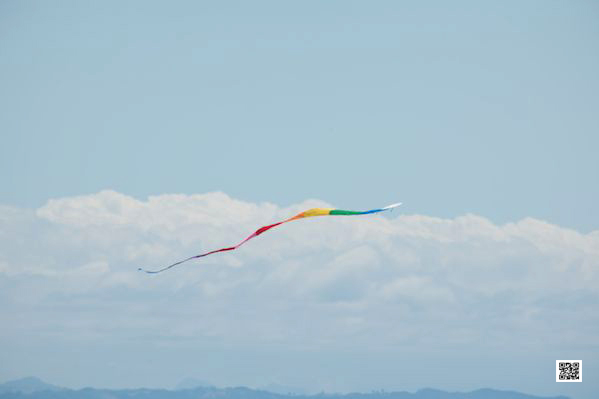
Philippe Petit is the high-wire-walker, famous for walking across the void between the two towers of the World Trade Center in New York in 1974.
“I knew as a wire walker, I would be a poet who writes in the sky. Art happens when you work millions of hours not to make it look hard but to make it look effortless. The beauty for an audience is to be inspired and awestruck because you made them forget that the wire was even there.” Philippe Petit
To make the audience forget that there is a wire, he works incredibly hard before the actual performance, but nobody can see that it is even work what he is doing.
Many great artists create a similar experience like for example the great ballet dancer Nureyev or in music e.g. Sting. Their performances seem effortless.
That can lead to the wrong conclusion that they don’t work and shouldn’t earn money and definitely not those huge amounts, because it doesn’t look like hard work. The same principle applies to any craftsmanship or work that is wonderfully done, from the gardener to the business leader and the painter and the housewife. Behind the appearance of effortlessness hides the most difficult and hard work, making it look effortless itself is hard work.
What does that mean for photography and photographers? One can often hear opinions that photography is no hard work, because it’s only a click on the shutter. When wildlife photography is presented its quality is often explained with the time the photographer had to spend to get the image and the difficulties he/she experienced in the bush. Other photographic artwork gets explained and valued with the hours the photographer had spend behind the computer to make it look like that and the more hours the more worth. But somehow nobody ever says about a photograph that it is great art, because it looks effortless. Is it, because there is controversy about what is art in photography or because people think that the other photographer only got lucky?
I don’t know, but I do know that every artist goes through a creative process with ups and downs and struggle and hassles, a painter, a musician and a photographer. And one can see the difference in the photographs, the story of the photographer is in them and photography itself is the effortless medium to visualize the efforts of the artist.
A creative journey in short is a photographic safari or a wildlife photography course. It’s the photographer and his/her camera that embark on the adventure and the pictures tell their story. The quality of the photos of the first day is different from the photos of the final day, yet they were taking with only a click on the shutter.
Keep working on effortless looking photography. It is not easy to get there, but when you make it, the results are mind-blowing.
Happy snapping!
Ute Sonnenberg for www.rohoyachui.com
Annie Leibovitz: Reflection
11/03/13 09:03 Filed in: Photography & Art

Sometimes a photographer needs moments of contemplation to reflect on the work she/he is doing, the photography she/he is doing and how happy one is with what one does. In this video a young Annie Leibovitz is reflecting on her portrait work, how she feels about it and how she experienced photographing John Lennon on the day he was killed. She expresses the wish to have time to be out, only she and her camera for two or three weeks, just to photograph what she wants, sees and loves.
Isn’t this exactly the dilemma when the photography business goes well for a photographer that suddenly there is no time anymore to just enjoy photography in its pure and essential way, just the photographer and the camera and no clutter around? This might be the moment that photography becomes again a hobby for the photographer, as funny as it might sound. And the photography guide starts craving a photographic safari just for him/herself and a photography teacher wishes to attend a photography course just for him/herself.
It is probably the danger when making your hobby and passion your work that you might lose the passion and love for what you are doing. I don’t know how Annie Leibovitz feels about this today, yet its great to hear how she felt about it at a younger age.
Keep having fun and joy when snapping away! Keep listening to your heart.
Ute Sonnenberg for www.rohoyachui.com
ePhoto Book: Sensation
10/03/13 10:56 Filed in: Photography & Art
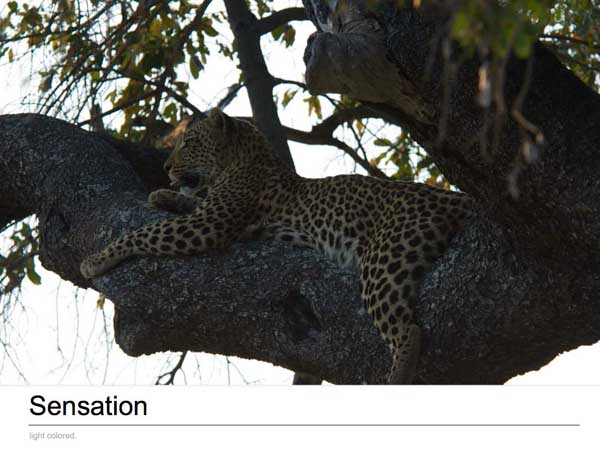
The Okavango Delta in Botswana is one of the most beautiful destinations for photographic safaris. The light is just sensational and even with an entry level photography equipment one can take the most amazing pictures.
Images from photo safaris to the Okavango Delta can always be identified easily, the light is different from any other place and photographers heaven.
The images of this book were not taken during a photography course, just when traveling for photo fun to the delta.
Click for the ephoto book here.
Enjoy!
Ute Sonnenberg for www.rohoyachui.com
ePhoto Book: Lamu
03/03/13 11:21 Filed in: Photography & Art

The island of Lamu is located just off the north-eastern coast of Kenya. It is the oldest Swahili settlement of the country and with its Arab architecture it is a wonder-world for photographers.
This photo book lets you travel to Lamu and takes you on a photographic “safari” through the streets of this World Heritage Site, a very special place for photography courses, lovers of colorful cultures and travelers to the tropical regions of the world.
Enjoy Lamu. View the book here.
Ute Sonnenberg for www.rohoyachui.com
Mario Testino: In Your Face
27/02/13 11:59 Filed in: Photography & Art

In Your Face is not only the name of fashion photographer Mario Testino’s first ever photo exhibition in the U.S. that took pace at the Museum of Fine Arts in Boston, it is also what his photography really is.
One can recognize his photographs immediately and for my feeling also his Italian descent. The composition, the movement, the beauty, just like energy coming out of the photographs, each one a wonderful piece of fine art photography. They somehow grab you and won’t let go anymore and that’s what art is about. You keep looking at them.
In your face or rather in your heart, that’s what a photo does, all photos do and what photography courses should teach the students, that their photographs touch hearts and mesmerize minds and turn into art.
Keep going, snapping and having fun!
Ute Sonnenberg for www.rohoyachui.com
Noam Chomsky: What Passion Can Do
25/02/13 11:56 Filed in: Photography & Art

Noam Chomsky the renowned American linguist turned 84 in December last year and he seems to be as active as always, Gary Marcus is writing for the New Yorker. A man full of passion for what he is doing, not tiring even at an advanced age, an example for all who are about to make choices in their life and the path of passion is one of the options.
No matter if language, photography or music is your passion, when you really love it, follow its call. It might feel frightening and the mind might be full of doubt, but trust your intuition and all will fall into place. Remember also Steve Jobs words, that you better do what you love to do when times get tough, otherwise you will not succeed.
Big words and deep in our heart we know they are true, but one still got to do it. Maybe the example of this inspiring personality can be a motivation and assurance that it really works.
Follow your heart and enjoy your passion!
Ute Sonnenberg for www.rohoyachui.com
Cindy Sherman: Self-Portrait of a Woman
18/02/13 09:33 Filed in: Photography & Art

Who is Cindy Sherman?
Cindy Sherman is a photographer, a very successful photographer with a unique style. She steps in front of the camera and takes self-portraits, yet it’s hard to know how she looks like, because she transforms into stereotypes of women in everyday situations, yet the women are not Cindy Sherman, or are they?
There is always the photographer in the picture, if he/she stands in front of the camera for a self-portrait or behind the camera, the photographers energy is there and therefore the images carry a photographers signature … even if hey are not signed.
Cindy Sherman is a remarkable person and photographer as her images show and art collectors seem to love it. The image above called “Untitled #96” was sold in May 2011 for USD 3.8 million.
Maybe the secret of her photography’s success is the mystery of who is Cindy Sherman? that every image seems to ask.
Read more about her in Phoblographer.
Ute Sonnenberg for www.rohoyachui.com
ePhoto Book: L'Amour Provence
17/02/13 09:32 Filed in: Photography & Art

The Provence is probably the most beautiful part of France.
Enjoy a photographic journey through this intriguing region of stunning nature, traditions, people and the horses of the Camargue.
Be inspired. View the book here.
Ute Sonnenberg for www.rohoyachui.com
How Intuition drives Photography
15/02/13 09:29 Filed in: Intuition | Photography & Art

What is intuition? When you know that you got to go to the park today to get the best pics of the swans or that you move just a bit more further to get the better composition of the house or that you just know that you will see a lion today on your photographic safari. You just know, your gut feeling tells you and it always proofs to be right, doesn’t it?
Where would we be in photography without our gut feeling? Would we even go on photographic journeys or to photography courses without it? What makes us creating art? Isn’t it all intuition, our gut feeling?
When do we have success in art and photography? It is the image that you very clearly remember taking in a split of a second and something made you taking it. And you love the image forever, isn’t it that way?
Trust your intuition and keep going.
Happy snapping!
Ute Sonnenberg for www.rohoyachui.com
Eames: Power of 10 - An Art Project
13/02/13 09:27 Filed in: Photography & Art

In 1977 Ray and Charles Eames created the incredible video Powers of 10 and unfolded for the viewer the gigantic dimensions from the universe on the widest scale to the inside depth of a cell on the smallest scale. This iconic video sparked 40 artists to create a 21st century version, each artist creating a segment in his/her own way.
The project is close to conclusion and promising a very inspiring result. Its going to be interesting what innovative approach was chosen by each artist and what role photography is playing in the result. It must be in, no question, but how and how can the project be used in art classes and photography courses, what will it contribute to photography and what will it teach photographers.
Read more about the powers project here. Watch the iconic video from 1977 here.
Be inspired!
Ute Sonnenberg for www.rohoyachui.com
How to Learn from Manuel Rivera-Ortiz
11/02/13 09:22 Filed in: Photography & Art
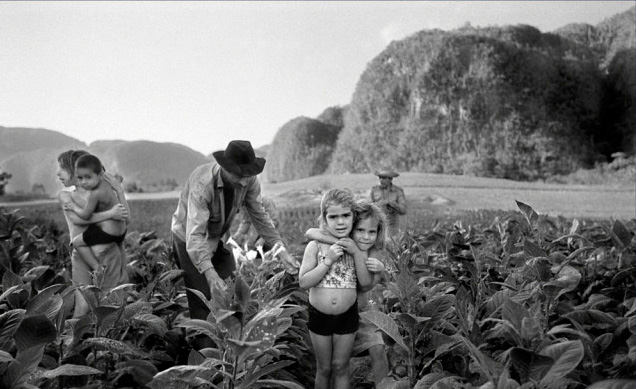
Manuel Rivera-Ortiz is a photographer known for it’s intriguing documentary style photography one connects with the Magnum Photographers.
He was born in Puerto Rico and came with his father and siblings to the United States when he was still very young. Rivera-Ortiz was a good student and worked for years as a journalist for newspapers. Not that long ago he caught the photography bug and since then he inspires with his fine art photography work to address social issues with the camera in a beautiful way.
Rivera-Ortiz only surrendered to photography in 2001 and in 2010 he started the Manuel Rivera-Ortiz Foundation for Documentary Photography and Film, what a wonderful success story.
What does that teach us? Live your dream.
Ute Sonnenberg for www.rohoyachui.com
ePhoto Book: Leopard Land
10/02/13 09:18 Filed in: Photography & Art
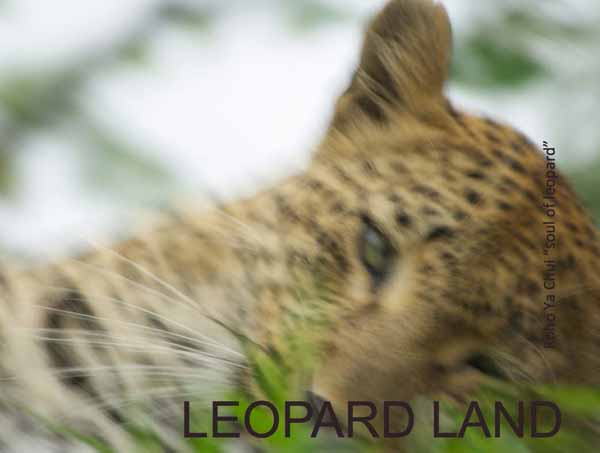
It is a place like in a fairy tail, yet it is real, leopard land. This place in the South African bush is heaven for photographers, wildlife lovers and an ideal destination for photographic safaris.
Curious? Have a look here.
Ute Sonnenberg for www.rohoyachui.com
Oscar Niemeyer - Inspired by Nature
28/01/13 19:54 Filed in: Photography & Art
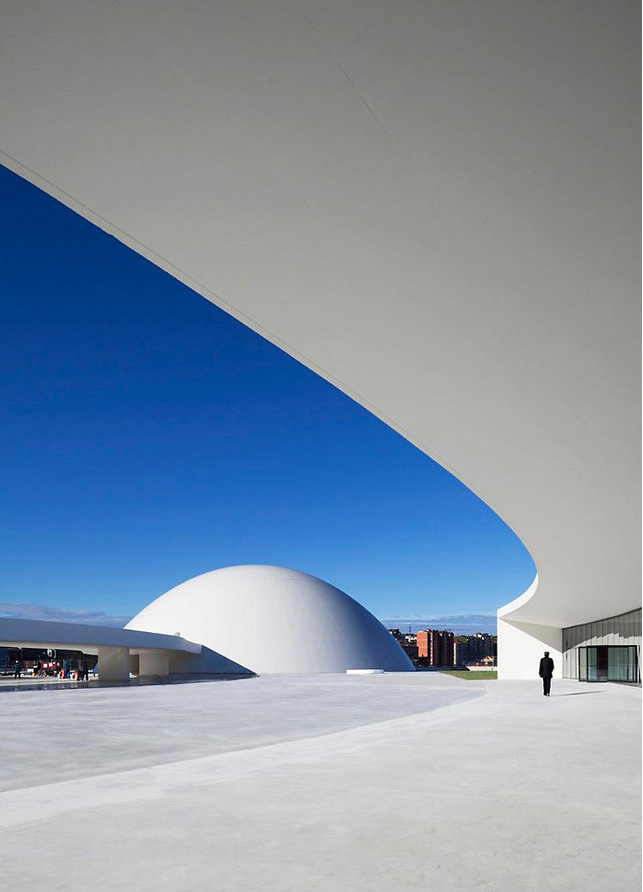
Oscar Niemeyer, Brasilia’s famous architect and co-creator of the city Brasilia, is well known for his creations made of concrete. In the case of Brasilia I find it personally a bit too much of his design in one place, a bit too much concrete, but nonetheless one can see clearly that Niemeyer was inspired by nature when creating his abstract formed buildings.
He wrote in his memoirs:
“I am not attracted to straight angles or to the straight line, hard and inflexible, created by man. I am attracted to free-flowing, sensual curves. The curves that I find in the mountains of my country, in the sinuousness of its rivers, in the waves of the ocean, and on the body of the beloved woman. Curves make up the entire Universe, the curved Universe of Einstein.”
One could say he created concrete art inspired by nature and concrete was an ideal medium to mold pieces of modern architecture.
For those of us who love photographing architecture, his work is a great subject and also a challenging one, making good examples for photography courses. How to photograph this modern architecture? What is the right angle to capture the spirit of it and not to distort the design? Probably by capturing the spirit of nature he put into it, focusing of dynamic parts of the buildings and one would actually capture the essence of his work.
Well, architecture photographers, take on the challenge and be inspired by a great man.
Ute Sonnenberg for www.rohoyachui.com
Image via Co.Design article on Oscar Niemeyer, read here.
ePhoto Book: App Art
27/01/13 19:48 Filed in: Photography & Art

Photography has become something for every day with the cell phone camera always with us, and a variety of photo apps at hand. The great filters of the photo apps give a boost to creativity and allow easy playing with artistic photography. No photography course needed, only the creative flow and there you are, creating art on the go.
App Art is a selection of app images, even from a wildlife sanctuary in Nairobi. View and download here.
Happy snapping!
Ute Sonnenberg for www.rohoyachui.com
Photography and the Money
25/01/13 07:58 Filed in: Photography & Art
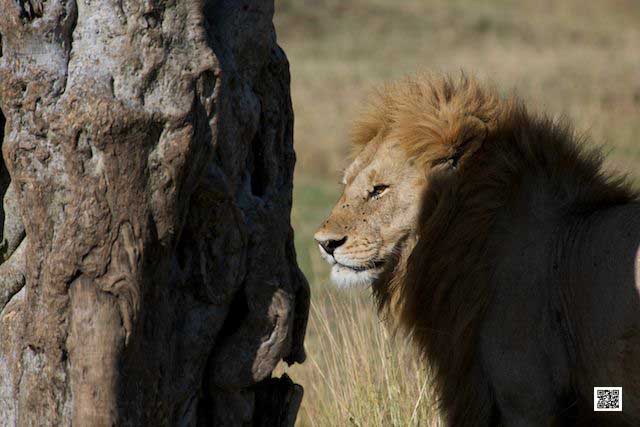
Collectors are usually careful or even skeptical with regards to fine art photography. A photograph might be reprinted in the future and the investment would be lost. But confidence is growing and experts think that the modern and contemporary photography art market will grow. Within the last year, new heights in fine art photography auctions were achieved and high prices were paid.
What does that mean? With photography now being an everyday part of life for billions of people around the globe its fine art is also more recognized and valuable for collectors. And photography itself has become big business through the cell phone market and camera equipment and it will be even bigger in the future. Photography is the future and that reflects in the art market as well with rising prices for fine art photography.
But how will photographers benefit from that? This is hard to say. Maybe a comparison from hospitality business can shed a bit light on that. Imagine you have a bar in a street where no other bar is. You think that’s great, because there is no competition, but that means also that the customers need to come especially to this street to visit your bar. How many people will do that? Some, but not many. Imagine you have a bar in a street where many other bars are. You might think that’s tough, because there is lots of competition, but it is the opposite. People know that there are many bars in the street and they have a choice, they can move around between bars the whole night if they want and that makes them come to this street. And where many customers are there is a chance that they will visit your bar too. The same works in photography. Many photographers make lots of photography and lots of photography makes lots of people interested in photography and the chances that people love your photography is higher than in times that only few people were doing photography.
Confused? Don’t think too much about it, just enjoy photography and follow your passion. The rest will come.
Ute Sonnenberg for www.rohoyachui.com
Camera Oscura - Old Masters and Photographers
24/01/13 08:47 Filed in: Photography & Art
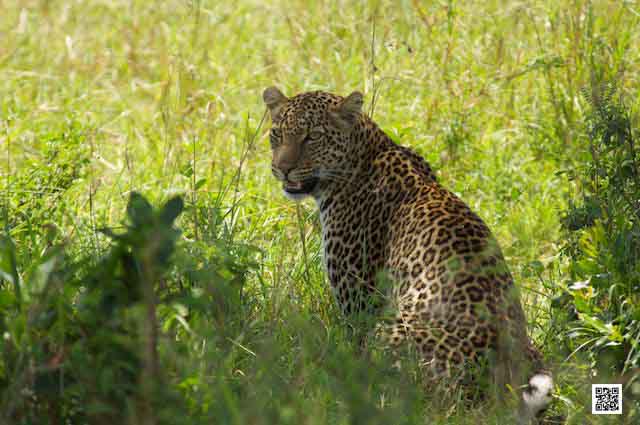
“The camera obscura is an optical device that projects an image of its surroundings on a screen.” (via Wikipedia)
It is thought that old masters like the Dutch painter Johannes Vermeer used it to create their paintings. British artist and art historian David Hockney did intensive research on the subject and concludes that the great masterpieces were created with the help of optics and lenses. (read the article on PetaPixel)
Knowing this doesn’t make their work less amazing. One can use optics and lenses and still doesn’t know anything about composition and light. One needs to be able to see first and that explains even more why a photographer can learn composition from looking at their masterpieces. They used photography tools the same way photographers are creating their compositions nowadays. So, going to a museum and looking at the old masters is a great photography lesson. Do the Louvre and you have a whole photography course, add a photographic safari and an intensive course in natural light will finish it up. And as a result your photographs are paintings with light, maybe even masterpieces of light and composition. You actually learned from old masters.
Surprising? Check it out. You can also visit the Louvre online. Here the link: Louvre.
Ute Sonnenberg for www.rohoyachui.com
Picasso: Painting by Heart
14/01/13 08:55 Filed in: Photography & Art
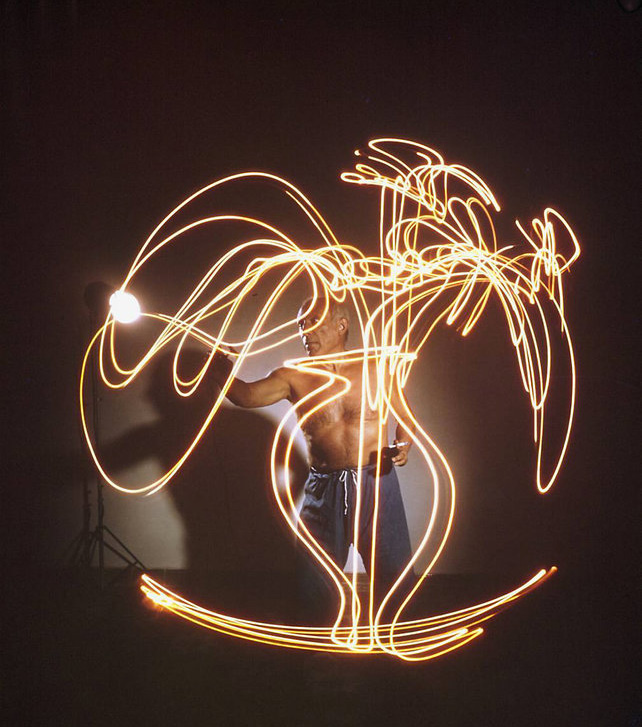
Light painting has become a very popular kind of photography nowadays and there might be even photography courses in light painting to learn the technique. Only as a side note, photography itself is painting with light, but we understand as light painting now, that somebody holds a light source and paints with it while a camera captures the process.
It turns out that light painting is not new. Picasso did it already in 1949. The Albanian photographer Gjon Mili introduced him to it and Picasso was thrilled. Read here what Mili and Picasse created for Life magazine:
“So Picasso did his thing, in various darkened rooms of his studio. He drew a centaur, the figure of a woman, an elephant, and various faces using a small pen light. “He was so fascinated by the result that he posed for five sessions,” wrote Life magazine, for whom Mili was freelancing at the time. “Mili took his photographs in a darkened room, using two cameras, one for side view, another for front view. By leaving the shutters open, he caught the light streaks swirling through space.” The resulting images were published in a 1949 issue of Life, recently resurfacing after the magazine published about the archived images.”
(read the complete article from Co.Design here)
There are other images showing Picasso creating paintings with one stroke and they are already impressing, but this is just stunning. Be aware he doesn’t see what he is painting, at least not with his eyes. If there is any proof necessary, this shows clearly that painting was in his heart.
Wanna try yourself? Paint with your heart!
Ute Sonnenberg for www.rohoyachui.com
How to Photograph on Christmas
21/12/12 17:52 Filed in: Photography & Art

Billions of photos will be taken on Christmas around the world, billions of videos will be shot and Youtubed on Christmas and billions of people will look at them and watch the videos. It will be mostly the same objects like Christmas trees, families at their Christmas feasts, families unpacking presents, Christmas decorations, children playing and people partying.
There are only few images taken at such an event that are interesting for a broader group of people (also those who don’t know the people in it) and these images are the ones that enable the viewer to become part of the family he/she is actually not part of in real life, but learns about them in an intimate way through the photographs.
How can those images be taken? First of all just shoot away without thinking too much. Then add to your focus of seeing (not on your camera) “motion” and from there go to photographing “emotion”. Your photographs will gain depth, what makes one keep looking at them and constantly finding new things in them.
This can be applied to any photography, yet Christmas is a good point to start.
Enjoy it and be surprised by the results.
Ute Sonnenberg for www.rohoyachui.com
Surprising Photography: It's Real
20/12/12 19:10 Filed in: Photography & Art
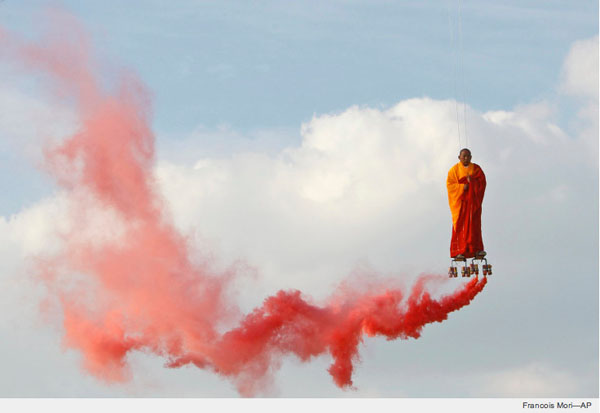
This monk traveling the sky on magic powered, red smoke exhausting, like roller blades looking devices might be very tempting to be thought being photoshopped, but its not. It’s real. This is what the Chinese artist Li Wei performed at La Villette in Paris in March 2012.
And this one, president Obama holding a crystal ball in his hands looking for the future of the world, which could be a typical example for photoshopping, and its not. Also this one is real.
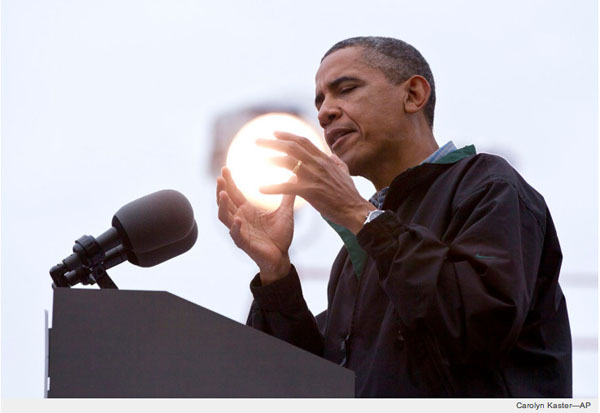
These two images are from the TIME Magazine’s TIME Picks of the most surprising photos of 2012. They are a wonderful example how real moments hold the most beautiful surprises and one only needs to see them, well and press the shutter at the right time. But they are there and it’s again a pure question of seeing.
Keep your eyes open and look for the surprise and captured it.
Happy snapping!
Ute Sonnenberg for www.rohoyachui.com
Louise Dahl-Wolfe: Natural Light
10/12/12 17:59 Filed in: Photography & Art

It might not be a model’s favorite thing to do, getting up at sunrise for the photo shoot at Miami South Beach, just because the photographer wants the best light. But isn’t natural light anyway the best light?
Louise Dahl-Wolfe was the pioneer in outdoor fashion photography, doing fashion photo shoots with natural light and inducing a whole movement, called Environmental Fashion Photography.
Some might prefer studio light, because it can be controlled completely, but natural light gives photography the authenticity we seem to be longing for in all we do and love. It is the ideal partner for great design and helps when the design is not so great by adding the splendid beauty of nature.
Louise Dahl-Wolfe understood the natural light very well and created the most beautiful fashion photography. Her work was and is inspiration to team up with the ambient light and encouragement for photographers to go outdoors!
Plunge into the natural light and see where it takes you.
Happy snapping!
Ute Sonnenberg for www.rohoyachui.com
Andy Warhol: The Visual Arts and Photo Apps
30/11/12 06:58 Filed in: Photography & Art

When Andy Warhol created these images nobody even thought that there would be a thing like Instagram one day. He brought the visual arts to new heights by playing with “filters” and color distortion and created the most appealing pop art paintings millions still love today.

Nowadays we all can be Warhols by using apps like Instagram and Hipstamatic to give our images the on the snap arty touch. Would he have liked it? Most likely he would have wielded the apps like nobody else, creating visual art at its best. So what can we learn from him? Probably the use of yellow, a color that screams at you and yet you keep looking. It’s that unrestricted use of color that strikes and that might also be the secret behind the success of photo apps like Instagram and Hipstamatic. You can go wild!
Keep enjoying it and add some Warhol to your photography!
Ute Sonnenberg for www.rohoyachui.com
Creative and Experimental Ways of Exhibiting Your Photographs
28/11/12 17:49 Filed in: Photography & Art

With billions of photographers out there one needs to be inventive in finding a way to stand out in presenting one’s photographs to the public. The classic album and photo book are always good, if it is the touchable paper version or the viral digital version, they are all beautiful. Besides that it is an exciting thing when a photographers can do an exhibition. Not only the stress in choosing the images for the show, also the presentation of the images itself and the theme of the exhibition can cause some headache. How can you make people come to see your art?
This is the moment when an inventive spirit is needed and there is no harm in looking what others do and get some inspiration.
Why not do a “Garage Sale” like exhibition and of course sell your photographs? The MoMA is doing it and so you can. At the moment the Martha Rosler’s “Meta-Monumental Garage Sale” is on at the MoMA until November 30 and it seems like a very clever idea. It feels more informal to the people and who does not like to sniff around a bit in the casual atmosphere of a flea market to unearth treasures.
Another genius idea is the “Steal My Photography” exhibition of Denmark-based photographer Lukas Renlund. He hung up 40 framed photographs outdoors and invited passersby to “steal”-take any single photograph they wanted. There was only one condition. They had to hang the photo up, wherever they wanted, take a photo of it and email the photo to Renlund. This is such a fantastic interactive and viral idea with benefits for all, photographer and photography lovers.
These are just a few ideas of experimenting with art exhibitions and maybe they are an inspiration to create your own creative and experimental art show.
Think different and let your art spark!
Ute Sonnenberg for www.rohoyachui.com
David Hockney: Seeing the World through a Wide Angle Lens
21/11/12 15:08 Filed in: Photography & Art

What struck me every time I looked at a David Hockney painting is the depth in them. This great perspective seeing and view line conscious eye of him, only matched by excellent wide-angle lenses we use in photography.



He paints like a wide-angle lens does when we photograph a sky with clouds or a landscape with a road. Well, that also means that we are little Hockneys as well, because one needs to see it first, the lens is only as good as the photographer that wields it. Yet Hockney’s paintings are wonderful to train your eye for perspectives and view lines. Look at them and your eye will learn. That’s enough, just look at them.
Happy seeing and shooting!
Ute Sonnenberg for www.rohoyachui.com
How to Photograph like Francis Bacon Painted
16/11/12 09:41 Filed in: Photography & Art

Bullfight by Francis Bacon
What do you see when looking at a Francis Bacon painting? Essence.
Yes, there is still recognizable shape, yet no disturbing details. The subject’s essence is captured in the painting and without seeing the bullfighter’s face we know it’s the bullfighter. The painting is condensed essence and when looking at it we can feel the energy between the man and the animal, the power of the moment the tension, the fear.
How can a photographer paint like Bacon? By daring to shoot away and simply following the energy of the moment.
Imagine a horse race. The horses are coming with such a speed that there is no time to think at all. You got to shoot away, just follow with your camera the energy of the racing horses and you will get the most amazing photographs. You will feel the energy and there is no choice, it lasts only for seconds, so just let go and shoot. The horses are faster than you and the camera, so probably most of the image will be blur, but the essence will be in focus and the blur rest of the image shows the dynamic of the moment. The viewer will feel it, just like in a painting from Bacon.
Dare!
Ute Sonnenberg for www.rohoyachui.com
Romance: Karen Blixen & Peter Beard
15/11/12 11:02 Filed in: Photography & Art

Do not jump to conclusions, romance is not an intimate relationship, romance is a strong connection sometimes people have, like mothers with children, siblings, soul mates or like we sometimes call them “like minded people” or rather “like hearted people”.
Peter Beard visited Karen Blixen at her home in Denmark. This was in the early 60ies and Beard was at that time a young man who had just started exploring East Africa and had been very much drawn into Blixen’s book “Out of Africa”. Well, a lady from Blixen’s household said that he seems to remember Karen Blixen of her big love Denys Finch Hatton, yet the connection the two was most likely the love and fascination for Africa.
Beard took some great photographs of Karen Blixen and probably even the last one ever taken of her, she died in 1962. Quotes from Out of Africa are on many of Beard’s photographs and it seems that they saw Africa the same way, had the same connection with the continent and its people and wildlife, shared the same fascination and loved it deeply. What Blixen was saying with words, Beard was saying with photographs and Blixen’s words on Beard’s photographs are an overwhelming combination.
Find a selection of Peter Beard’s work on his website or in the book Peter Beard Trade Edition or get in the car and drive to Arles in the Camargue in Southern France. Hotel Nord Pinus in Arles has an impressing small collection of original Peter Beard photographs, including a Karen Blixen portrait.
What fascinations are you sharing? Even thought to capture them in photographs?
Ute Sonnenberg for www.rohoyachui.com
photo above: Peter Beard photo of Karen Blixen, shown at Hotel Nord Pinus in Arles
Hone your instincts: Joel Meyerowitz, Photographer
06/11/12 20:09 Filed in: Photography & Art

A remarkable story to encourage all photographers and almost photographers: the life journey of the New York City–based photographer Joel Meyerowitz.
In 1962 Meyerowitz was working as an art director at an advertising agency when he watched photographer Robert Frank working on an advertising photo shoot. It proofed to be a cathartic moment for Meyerowitz. Back in the office he told his boss that he wanted to be a photographer.
“On the way back to the office, Meyerowitz walked the streets of New York for more than an hour. “I felt like I was reading the text of the street in a way that I never had before,” he says.
When he returned to the office, Meyerowitz told his boss, Harry Gordon, that he was quitting. He wanted to be a photographer. Gordon then asked him a crucial question: did he have a camera? The answer was no, so Gordon lent him a 35mm camera and Meyerowitz embarked on the great journey of his life.
That first day with Robert Frank served as more than just a catalytic inspiration; it laid the foundation for how Meyerowitz would record street life. He bobs and weaves through the throngs of people, searching for that serendipitous moment that becomes a great photograph.
When he is shooting on the street, there isn’t much time to contemplate each moment. “Photography takes place in a fraction of a second,” Meyerowitz says. “There isn’t a lot of time to think about things. You have to hone your instinct. You learn to hone that skill and timing so you’re in the right place at the right time.” Although he has made images that have moved audiences for decades, that has never been his true motivation. “I’m not out there to make another ‘great picture,’” he says. “I’m really out there to feel what it feels like to be alive and conscious in that moment. In a sense, the record of my photographs is a record of moments of consciousness and awareness that have come to me in my life.”” (via Time, by Nate Rawlings)
This life changing moment happened 50 years ago. For this anniversary Meyerowitz compiled hundreds of images into a two-volume book, Joel Meyerowitz: Taking My Time (Phaideon Press).
From November 2, his work is been displayed at the Howard Greenberg Gallery in New York.
Be inspired!
Ute Sonnenberg for www.rohoyachui.com
What would You Do in Photography, if money would matter?
18/10/12 17:12 Filed in: Photography & Art

Vincent Van Gogh must have had a real passion for his vision, continuing with his art, although he never sold one painting. And now his work is the most desired and most expensive in the world. People in his time might have felt disturbed by his new way of seeing and painting. They rather wanted it like it was and the new way only would stir something in them they didn’t want to feel, change. Innovation always causes first rejection and repression, because it means change, even in art and the one thing people resist the most is change. Other genius artists like Picasso saw Van Gogh’s strength, learned from him and honored him, yet the big public needed more time and the masses only join when something is already announced great by other famous people. Van Gogh didn’t have the breath to sit that out. Do we?
Maybe not many of us can be a Van Gogh of photography, but there are certainly many great photographers out there who do not dare to make the move, because of the fear of ending up like him. Would you do it, if you wouldn’t have to worry about money? Would you choose photography as your full-time passion? Can one choose a passion or chooses the passion you?
Many great people are doing talks on that matter and always say that you have to follow your heart and you will be excellent in what you are doing and then the money comes as well. And the people saying that are the Steve Jobs. They embarked on that path and excelled, went through the painful times and arrived at great success, admired for who they are and what they do. The great ones did it despite that money mattered, just like Van Gogh and they are the ones that are innovative, the ones that bring change.
It’s a tough and scary call to make. Only your heart knows the answer.
Ute Sonnenberg for www.rohoyachui.com
MoMA's New Photography 2012 - Emerging Photographers
10/10/12 11:54 Filed in: Photography & Art

The annual photography exhibition New Photography at the New York City Museum of Modern Art MoMA has started on the 3rd of October and runs through to the 4th of February 2013.
The exhibition wants to showcase emerging photographers and sees itself each year confronted with a bigger challenge with all the images taken by millions of photographers on all the social networks. According to the New York Times more than 380 billion photographs were taken in 2011 alone.
So, it must have been a hard job to decide on 5 photographers to be featured on the New Photography 2012 exhibition. The artists are Michele Abeles, Birdhead (Ji Weiyu and Song Tao), Anne Collier, Zoe Crosher and Shirana Shahbazi. Detailed information is available on the exhibition site and in the Time Magazine article by Erica Fahr Campbell.
Isn’t it an incredible inspiration that any of the photographers showcasing their work on social media could be one day the emerging photographer of New Photography?
Keep shooting!
Ute Sonnenberg for www.rohoyachui.com
While Talking about Photo Books - The Ai Weiwei Photo Book "Becoming"
05/10/12 13:39 Filed in: Photography & Art

The blog post on Monday was about sought after limited edition photo books and today Mutual Art announced the Ai Weiei artwork “Becoming”, a limited edition photo book with images taken by this amazing Chinese artist. The price is in line with the other books, USD 10,500 per copy.
Read more about this doubtless amazing artwork here.
But there also nice new things to do with photography that cost nothing or close to nothing. The iPhone app Mixel allows you to make great collages of your images and to send them as real postcards to your friends and family. The app is for free, only the stamp will make some costs.
Photography really does offer fun for all budgets and that makes it such a great art form to enjoy.
Happy snapping, mixing and sending!
Ute Sonnenberg for www.rohoyachui.com
Steve McCurry: The connected Eye
20/09/12 17:58 Filed in: Photography & Art
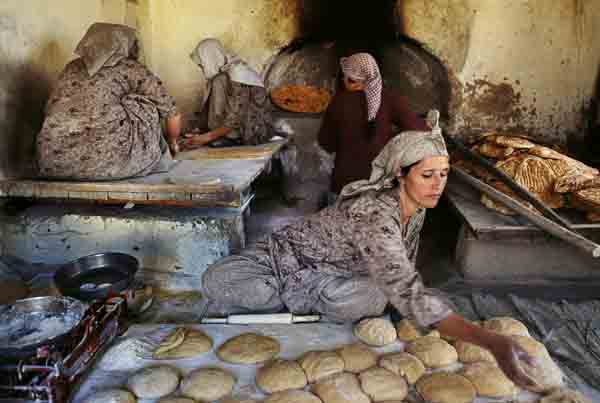
When looking at Steve McCurry’s photographs it feels like tapping into the soul of the moment or person he captured, like in the image above from his series “Food for Thought”.
Repeatedly occurring words in his quotes are “soul”, “grounded” and “hope” and yes, they are in every image, almost penetrating the viewer while looking at them.
Obviously Steve McCurry has the deeper connection with his subjects, capturing souls and hopes, yet his solid grounding makes these deep insights possible. Soaring on soul level requires grounding, just as artistic heights in photography require a solid technical grounding.
He got both and well balanced. His photography is food for thoughts.
Tweet.
Ute Sonnenberg for www.rohoyachui.com
Peter Beard & Francis Bacon - Photographer and Painter
10/09/12 19:26 Filed in: Photography & Art
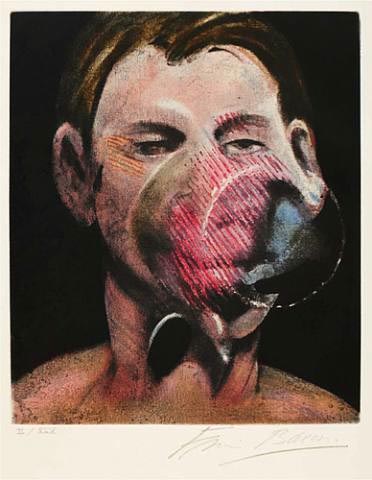
“Sometimes there is nothing better than a bad exposure.” said Peter Beard about photography during an interview with Steven M.L. Aronson and he meant to explain that lots of his photographs happened just by accident, and he was hoping for really good accidents and it turns out his photography is really great.
Beard studied art history at Yale and took color courses with Josef Albers, Neil Williver and Al Katz, but as he says, Richard Lindner and Francis Bacon were his real art teachers later in life.
Peter Beard met Francis Bacon at a presentation of his book “The End of the Game” in London. Bacon had just purchased the book and invited Beard immediately into his studio. Beard took polaroid photos of Bacon’s work. The polaroids became a source of inspiration for Bacon regarding colors and shapes in his paintings and in return Beard learned from Bacon essential things like looking at old masters to learn about light and composition.
A friendship had developed and Bacon painted Beard several times. I dare to say that Bacon’s way of seeing art, reflects in Beards work and is one of the reasons of the mesmerizing impact Beard’s artwork has.
Read more in Peter Beard Trade Edition, available at Taschen and get insights in this creative friendship of two amazing artists.
Image above via HH Fine Art.
Ute Sonnenberg for www.rohoaychui.com
How to Photograph Love
05/09/12 11:06 Filed in: Photography & Art

We might first think of symbols like roses, a sunset, a puppy, a baby or simply beloved family members. Yet we don’t need symbols to photograph love. Love is in all our photographs; love is the connection we have with our photographic subject.
But we might think, I don’t love this tree, yet you photograph it, yet it does something to you, maybe the light, the reflections, the movement of the leaves; it induces something that makes you photographing it, ending up telling everybody how you love this picture. The picture shows your love for life, light and whatever love wanted to express itself the moment you saw the tree. And now it’s captured in the image, inducing love every time you look at it again.
Ute Sonnenberg for www.rohoyachui.com
Who Inspired Who - Intellectual Property in Photography
26/07/12 20:41 Filed in: Photography & Art
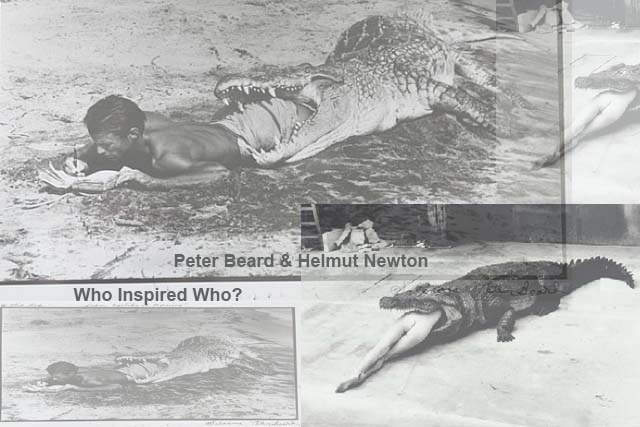
Have you ever asked yourself when seeing art who might have been the inspiration for this artwork? Was there somebody who did something similar before this artist picked it up and created his/her artwork? Pablo Picasso paid respect to Vincent van Gogh in one of his early paintings by painting in Van Gogh’s style. He had seen the greatness of Van Gogh before others did.
An interesting “couple” are also Charlie Chaplin and Stanley Kubrick. There is a great documentary about Stanley Kubrick called “A Life in Pictures” from 2001 and another great documentary about Charlie Chaplin called “Charlie: The Life and Art of Charles Chaplin” from 2003. I watched first the Kubrick documentary and it was absolutely amazing and impressive. Only later when I watched the Chaplin documentary I was surprised how influential Charlie Chaplin was and how much of his artistically groundbreaking film work could be found in Kubrick’s work.
The same happens in photography. One of the photographs above is from Peter Beard, “I’ll Write Whenever I can” and shows him with a dead crocodile in the typical Peter Beard style of presenting his work. The other photograph is from Helmut Newton, “Crocodile Eating Ballerina” from 1983. Seeing the age of Peter Beard in the image, it looks like he was first with the crocodile posing.
How often does the same as with these two pictures happen? In this Internet social media age probably a million times. We just don’t know, because not every artwork becomes as famous as the art from Beard and Newton. But that doesn’t mean that we shouldn’t care about the intellectual property of others, only because they might never find out. Treat them the way you want to be treated. Credit your sources and protect your creations.
Happy sourcing and creating. Be inspired.
Ute Sonnenberg for www.rohoyachui.com
How to Show and Sell Your Photos and Artwork on the Internet
17/07/12 18:23 Filed in: Photography & Art | Technology & Gadgets
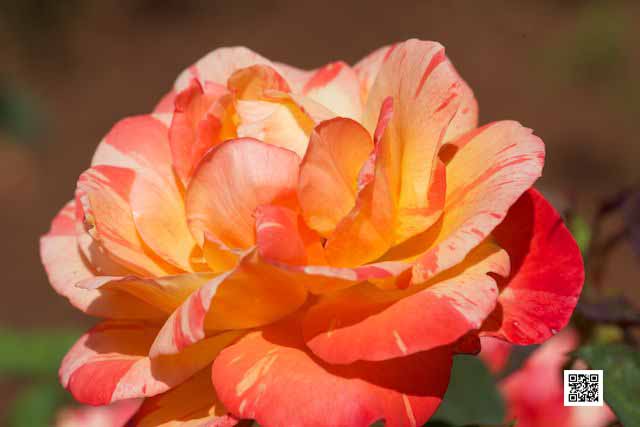
We all know about the obvious photo sharing options like facebook, Flickr, other social media and portfolio sites, but what if you want to sell your images as posters, postcards or other products? Maybe we need only to wait long enough and facebook will do that as well, but maybe not. There are websites that offer this service already and here are 2 of them.
The first is PhotoShelter. Photoshelter is as its name says a shelter for photographers. Not only can images be sold as prints and products, you can also have your own stock photo gallery and sell digital image files. The clients go to your website, browse the images and buy directly online. Photoshelter takes care of the financial part of the transaction and the copyright safety of your images. The services of Photoshelter are not for free. You pay a monthly or annual fee depending on the storage size you choose. Their services are open for professional photographers.
The second service provider is Artflakes. Artflakes is open to all artists and photographers. They are based in Berlin and offer great print services in good quality for deliveries all over the world. As a photographer you can sign up for free, upload images and set the price you wish for prints and products yourself (also in photoshelter you can set the price yourself). Artflakes is also a kind of artists network with following options and likes, but you don’t need to go around and like if you don’t like, but there are interesting artworks to discover.
Maybe these two websites can open new fields of activities for you. Have a look.
Happy discovering!
Ute Sonnenberg for www.rohoyachui.com